THE UNIVERSITY OF MICHIGAN CENTER FOR CHINESE STUDIES
MICHIGAN PAPERS IN CHINESE STUDIES
No. 16
AN ANNOTATED BIBLIOGRAPHY of CHINESE PAINTING CATALOGUES AND RELATED TEXTS
Hin-cheung Lovell
Freer Gallery of Art
Smithsonian Institution
Ann Arbor
Center for Chinese Studies
The University of Michigan
1973
Open access edition funded by the National Endowment for the Humanities / Andrew W. Mellon Foundation Humanities Open Book Program
Copyright 1973
by
Center for Chinese Studies
The University of Michigan
Printed in the United States of America
ISBN 978-0-89264-016-4 (hardcover)
ISBN 978-0-472-03840-4 (paper)
ISBN 978-0-472-12821-1 (ebook)
ISBN 978-0-472-90221-7 (open access)
The text of this book is licensed under a Creative Commons Attribution-NonCommercial-NoDerivatives 4.0 International License: https://creativecommons.org/licenses/by-nc-nd/4.0/
Table of Contents
ANNOTATED BIBLIOGRAPHY of the 108 titles in John C. Fergusons Li-tai chu-lu hua mu
ANNOTATED BIBLIOGRAPHY of 22 additional titles.
The student of Chinese painting who is at all concerned with its textual aspects must from time to time consult John C. Fergusons Li-tai chu-lu hua mu  (Peking, 1934; reprint; Taipei, 1968), an index to Chinese paintings recorded in Chinese catalogues. Having consulted Ferguson, he is certain to want to know more about the catalogues in which the paintings are recorded: their compilers, the date of their compilation, their scope, their derivation, their merits and shortcomings, and so on.
(Peking, 1934; reprint; Taipei, 1968), an index to Chinese paintings recorded in Chinese catalogues. Having consulted Ferguson, he is certain to want to know more about the catalogues in which the paintings are recorded: their compilers, the date of their compilation, their scope, their derivation, their merits and shortcomings, and so on.
This Annotated Bibliography of Chinese Painting Catalogues and Related Texts grew out of notes I had been making for my own reference since 1969. It occurred to me that there might be a need for an annotated bibliography in English among students whose knowledge of Chinese is not proficient enough for them to consult the annotated bibliographies which exist in Chinese, principally Shu hua shu-lu chieh-ti  by Y Shao-sung
by Y Shao-sung  (Peking, 1932; reprint: Taipei, 1968), and Ssu-pu tsung-lu i-shu pien
(Peking, 1932; reprint: Taipei, 1968), and Ssu-pu tsung-lu i-shu pien  by Ting Fu-
by Ting Fu-  pao and Chou Yn-ching
pao and Chou Yn-ching  (Shanghai, 1957). To those who have no difficulty with the language, the bibliography may be a tool providing the basic information on the catalogues in an easily available form.
(Shanghai, 1957). To those who have no difficulty with the language, the bibliography may be a tool providing the basic information on the catalogues in an easily available form.
Essentially, then, the Annotated Bibliography is a companion to Ferguson, and as such, it consists of a review of each of the 108 titles used by him in Li-tai chu-lu hua mu as given in his bibliography. The reviews are arranged as far as possible in a chronological order according to the date of compilation. They are numbered consecutively from 1 to 108,
The heading at the beginning of each entry gives the following informations
(a) The name of the compiler.
(b) The title of the text.
(c) Whenever possible, the date of compilation. This information is usually in the authors preface or someone elses preface. If no such information is available, an approximate date will be given in the entry, and the date of the compilers death will determine the position of the review.
(d) The number of chan in the text.
(e) In parentheses, a cross-reference to the numbering system used in Fergusons bibliography. For example, in my first entry, (Ferguson, 9, 12) indicates that the text Chen-kuan kung ssu hua shih is listed in Fergusons bibliography as the twelfth title under the nine-stroke group because the first character chen has nine strokes.
(f) Citation of the most recent, most easily accessible and least expensive edition or editions. In many cases, this means the editions in Mei-shu tsung-shu and I-shu tsung-pien, or the most recent facsimile reprints in the I-shu shang-chien hsan-chen series produced in Taipei. These publications are readily available and inexpensive enough to be within the reach of the serious student and certainly of those universities where the study of Chinese art is a recently established discipline. The student who feels inclined to explore the problem of textual variations in different editions can do so on his own initiative. In the small number of instances where the rule of citing a recent edition or reprint is not feasible, the citation is to the particular edition I used.
(g) In the cases of those titles not included in Mei-shu tsung-shu, I-shu tsung-pien, I-shu shang-chien hsan-chen, or excerpted in Pei-wen-chai shu hua pu, the name of the institution given in square brackets indicates the source of the text consulted.
In addition to the reviews of the 108 titles used by Ferguson, there is a supplement of reviews of twenty-two other texts not used by him but which are pertinent to our purpose. Some of these were compiled after 1934 and others were simply not used by him either because they were unavailable or unknown to him. These reviews, bearing numbers S.1 to S.22, are also arranged chronologically and are given the same treatment as the other 108 titles. This list of twenty-two is by no means an exhaustive one of the texts omitted by Ferguson, but it does include some obvious and frequently encountered titles.
It is impossible in a work of this nature to subject each text to the kind of intensive study carried out, for example, by Professor Soper on Kuo Jo-hss Tu-hua chien-wen chih. In my reviews, I have tended to devote greater space to the more important texts, and to be especially severe in my criticism of the more pretentious compilations.
Although I tried to arrive at my own assessment of each text, Shu hua shu-lu chieh-ti and Ssu-pu tsung-lu i-shu pien were inevitably much consulted, I would like to express my appreciation of the assistance of Dr. K.T, Wu and his staff of the Orientalia Division, Library of Congress; of Miss Jean Finch of the Stanford University Art Library; of the Harvard-Yenching Institute Library; and of the University of Chicago Library. A number of elusive texts were located with the help of Sewell Oertling, Celia Riely, Lothar Ledderose, and Marilyn Fu. Mr. Wang Nan-ping supplied the dates of two modern collectors. The manuscript was read by Mr. Wan Wei-ying, Head of the Asia Library, University of Michigan, who made a number of suggestions for improvement. Bibliographical problems were solved with the help of Celia Hu, Assistant Librarian at the Freer Gallery; she also had the onerous task of checking two typescripts. Throughout the preparation of the Annotated Bibliography, Thomas Lawton was of assistance in ways too numerous to record; to him I owe a special debt. But for his repeated assurances that the project was worth finishing, I would surely have at some exasperated moment consigned the half-typed script to the Potomac.
Hin-cheung Lovell
Freer Gallery of Art
September, 1973
| CPTSTS | Chih-pu-tsu-chai tsung-shu  |


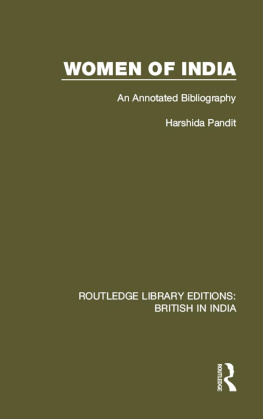
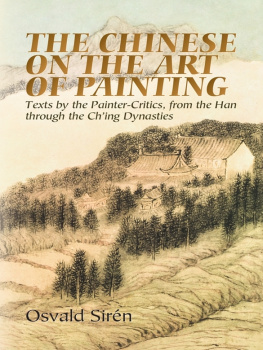
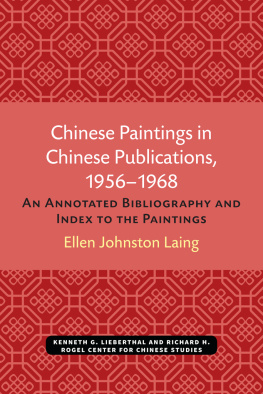
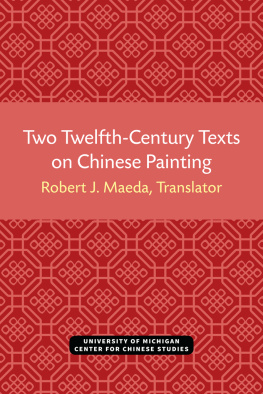
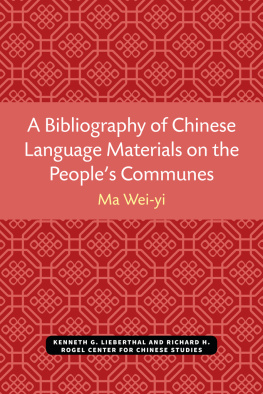

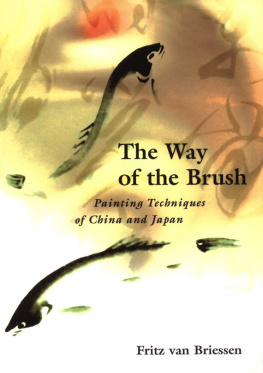
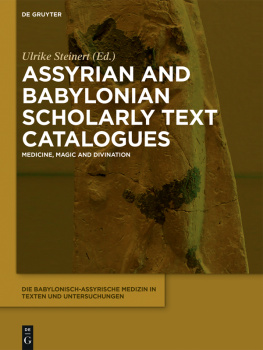

 (Peking, 1934; reprint; Taipei, 1968), an index to Chinese paintings recorded in Chinese catalogues. Having consulted Ferguson, he is certain to want to know more about the catalogues in which the paintings are recorded: their compilers, the date of their compilation, their scope, their derivation, their merits and shortcomings, and so on.
(Peking, 1934; reprint; Taipei, 1968), an index to Chinese paintings recorded in Chinese catalogues. Having consulted Ferguson, he is certain to want to know more about the catalogues in which the paintings are recorded: their compilers, the date of their compilation, their scope, their derivation, their merits and shortcomings, and so on. by Y Shao-sung
by Y Shao-sung  (Peking, 1932; reprint: Taipei, 1968), and Ssu-pu tsung-lu i-shu pien
(Peking, 1932; reprint: Taipei, 1968), and Ssu-pu tsung-lu i-shu pien  by Ting Fu-
by Ting Fu-  pao and Chou Yn-ching
pao and Chou Yn-ching  (Shanghai, 1957). To those who have no difficulty with the language, the bibliography may be a tool providing the basic information on the catalogues in an easily available form.
(Shanghai, 1957). To those who have no difficulty with the language, the bibliography may be a tool providing the basic information on the catalogues in an easily available form.